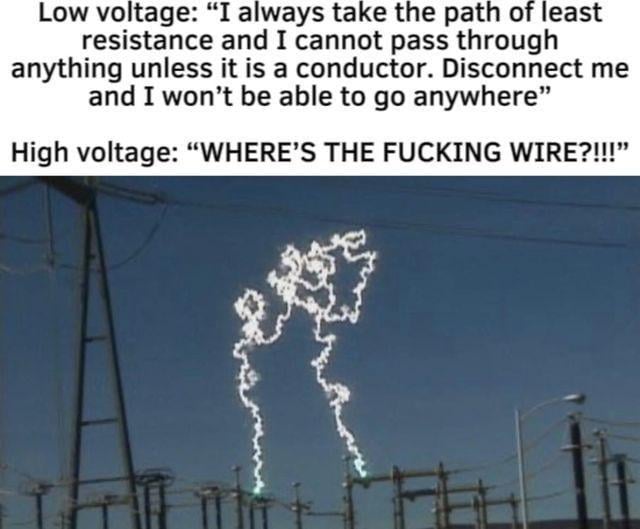this post was submitted on 14 Jan 2025
1127 points (98.9% liked)
Science Memes
11661 readers
1754 users here now
Welcome to c/science_memes @ Mander.xyz!
A place for majestic STEMLORD peacocking, as well as memes about the realities of working in a lab.

Rules
- Don't throw mud. Behave like an intellectual and remember the human.
- Keep it rooted (on topic).
- No spam.
- Infographics welcome, get schooled.
This is a science community. We use the Dawkins definition of meme.
Research Committee
Other Mander Communities
Science and Research
Biology and Life Sciences
- [email protected]
- [email protected]
- [email protected]
- [email protected]
- [email protected]
- [email protected]
- [email protected]
- [email protected]
- [email protected]
- [email protected]
- [email protected]
- [email protected]
- [email protected]
- [email protected]
- [email protected]
- [email protected]
- [email protected]
- [email protected]
- [email protected]
- [email protected]
- [email protected]
- [email protected]
- [email protected]
- [email protected]
- !reptiles and [email protected]
Physical Sciences
- [email protected]
- [email protected]
- [email protected]
- [email protected]
- [email protected]
- [email protected]
- [email protected]
- [email protected]
- [email protected]
Humanities and Social Sciences
Practical and Applied Sciences
- !exercise-and [email protected]
- [email protected]
- !self [email protected]
- [email protected]
- [email protected]
- [email protected]
Memes
Miscellaneous
founded 2 years ago
MODERATORS
you are viewing a single comment's thread
view the rest of the comments
view the rest of the comments

I think people just don't understand ohm's law. They seem to think voltage and current are unrelated to each other.
I suppose it's half right. Obviously OHMs law is the triangle.
So you get a high voltage, running through a high resistance, it won't kill you. The problem is people interpret it in a way that seems to think raising the voltage without raising the resistance is just fine.
It's kinda hard to raise your body's resistance a ton outside of not making good contact (e.g. wearing rubber boots/gloves). Things like your skin being moist lower resistance, but I'm not sure it's really that much of a safety factor when dealing with high voltage.
I think the general gist is.. not as much your body's resistance as the circuit as a whole. IE a high voltage power source traveling through a high resistance circuit, vs touching the high voltage source directly.
It's about the full path the electricity takes (not counting any portion that you may be cutting out if you are giving it a faster path to ground allowing it to bypass some resistance), rather than just the voltage of the source.
That's the point that's trying to be made in that statement, the voltage is indeed a critical part of the equasion. Just not the sole portion of importance.
Voltage and current are related, of course, but Ohm's law is just a simplification of circuit theory for static circuits, and the version most are taught early on assume zero inductance and zero capacitance in the circuit. Drop in an alternating current, some capacitors and inductors, and you've got yourself a more complex situation, literally, with the scalar real number representing resistance replaced with the complex number representing impedance.
And when you have time variance that isn't a simple sinusoidal wave of electric potential coming from a source, even the definition of the word "voltage" starts requiring vector calculus to even be a coherent definition.
So when I take a simple battery of DC cells to create a low voltage power source, I can still induce current using some transformers and inductors (which store energy in magnetic field) and abruptly breaking open the circuit so that the current still arcs across high resistance air. That's the basic principle of how a spark plug works. In those cases, you're creating immense voltages for a tiny amount of time, but there's never any real risk of significant current being pushed through any part of a person's body. And as soon as you draw off some of the current, the voltage immediately drops as you deplete the stored energy wherever it is in the system.
And anything designed to deliver an electric shock to a person (or animal) tends to be high voltage, low current. Tasers, electric fences, etc.
So it's current that matters for safety. A high voltage doesn't always induce a high current. And current can cause problems even at relatively low voltages.